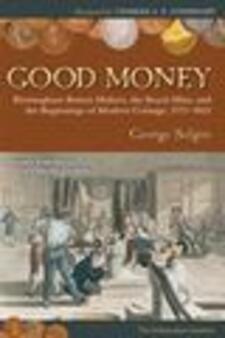Q&A with Arnie Bernstein, author of Bath Massacre: America's First School Bombing

On the morning of May 18th, 1927, in Bath Michigan, Andrew P. Kehoe’s farm caught fire.
At roughly the same time, the north wing of the Bath Consolidated School exploded.
Chaos ensued as those uninjured or killed by the blast worked to clear the rubble and get to the trapped children.
Kehoe pulled up to the devastated scene, and, shortly thereafter, his vehicle, packed with rusty farm equipment and dynamite, exploded, killing him, along with Superintendent Emory Huyck and several others.
At the end of it all, 38 children and six adults, including Kehoe and his wife, were dead. Bath Massacre: America’s First School Bombing by Arnie Bernstein is the gripping account of this, America’s first, and largest, school mass murder.
University of Michigan Press: This is an absolutely shocking tale. Could you set the scene for us? Describe the town, the times, and the circumstances that lead up to this horrific event?
Arnie Bernstein: In many ways Bath was the quintessential small rural town about 10 miles from the state capital in Lansing. It was the kind of place where everyone knew their neighbors and doors went unlocked at night. Though the town has developed over the years, a lot of it looks exactly as it did on May 18, 1927. It literally is one of those places without a stoplight, just a cross street with a four-way stop sign. The majority of Bath residents in 1927 were farmers, though there were also tradesmen. The one street “downtown” area had a grocery store, a pharmacy, a blacksmith/auto repair shop, a community hall for recreation and social gatherings, and of course the consolidated school that overlooked everything from the town center. We think of 1927 as the height of the Jazz Age. Even though Al Capone had a summer cottage not far from Bath the scandal and wild ways of the Roaring Twenties roared well outside of Bath. In fact, most residents still did not have homes wired for electricity. On the morning of the bombing, men from Michigan’s Consumers Power Company were putting up poles and stringing wire so residents could finally have electricity on demand.
The consolidated school had replaced the old one-room schoolhouses that dotted the region into the late 1910s. It opened in 1922 for students in kindergarten through senior year of high school. Just about everyone in the Bath region either had a child enrolled at the school or had family or friends whose children attended Bath Consolidated, around 275 students at the time of the bombing. The school was not without some controversy. Schools cost money and Bath Consolidated—like all public schools—was financed through taxes. Some felt the property taxes to fund the school were too high. Andrew Kehoe was one of them.
UMP: Who was Andrew P. Kehoe? Can you give any insight as to his motivations and character?
AB: Kehoe is a real enigma. He was born in Tecumseh, Michigan in 1872. As a kid he was interested in electricity and experimented with machinery for his father’s farm. His mother died when he was a young man and his father, Philip Kehoe remarried Frances Wilder, a woman closer to Andrew’s age than Philip’s. When he was about 19, Kehoe went to St. Louis to formally study electricity. At some point he had an accident that put him in a coma for two weeks. It’s not known what happened or what kind of effect this had on him overall. Eventually he came back to Tecumseh to work on his father’s farm. One day there was a terrible accident at the Kehoe residence where the gasoline stove exploded and killed Frances. Years later, after Bath school bombing, people wondered if Kehoe had somehow rigged the stove to kill his stepmother. He certainly had the mechanical know-how to pull it off, and Kehoe really did not like Frances. But that’s one of the great unknowns in the mystery of Andrew Kehoe.
In 1912, he married Nellie Price. The two bought a farm in Bath from her uncle, Lawrence Price. Right away, Kehoe’s neighbors knew there was something different about him. He did his farming in a coat and clean white shirt and never seemed to break a sweat. He was also considered an expert in dynamite and explosives. This wasn’t odd since farmers often used dynamite to break up old tree stumps or boulders on their farmland. It seemed like Kehoe had two sides to him: many thought he was a polite friendly guy who got involved in local affairs. It was his concern for community, particularly how public funds were used, got him a position on the school board. He was appointed treasurer and he always kept books perfectly balanced. And because he was so handy at repair and machinery, Kehoe was often asked to fix mechanical problems at the school. He had a key to the building, and this gave him access to the school anytime day or night. But Kehoe was also a cantankerous personality; he could be shorttempered and there are at least two known incidents where he deliberately killed a dog and a horse out of spite. Kehoe and school superintendent Emory Huyck were always at odds over how the school was run and various expenditures. His home life was a mess too. Nellie was chronically ill, always in and out of the hospital. After a time Kehoe simply let his farm go to seed and blamed others for his problems. He stopped paying his mortgage and clearly his farm wasn’t making any money. But even though Kehoe was certainly odd and troubled, no one could have imagined he was capable of mammoth destruction and murder.
UMP: How did you come to write about this event?
AB: I was inspired by some friends who’d written books about forgotten stories in history. These books really grabbed me; how do you make something lost to history come alive? I was poking around the Internet on a web site called “Find a Grave,” which lists famous burials sites, a sort of who’s who among cemeteries around the globe. There was a listing for the Bath Memorial. I started reading and was hooked. I’d never heard of the story and it was compelling. This was the deadliest act of school violence in American history! Worse than Columbine and yet very little was written about this horror. Plus the way the story unfolded, with the bombings, the fires and the rescue efforts and a clear-cut villain were any writer’s dream. I knew I had my story! But the first time I visited Bath and Pleasant Hill Cemetery where many of the children are buried, the whole thing changed for me. It stopped being a “story;” it was stark reality. I knew this was something more than a forgotten episode in history; this was a very real and deeply tragic event that still impacts the town some eight decades after the bombing.
UMP: What do you hope that readers will take away from reading this book?
AB: We think school violence is a modern phenomenon, but it isn’t. I opened the book with the Virginia Tech shooting, which happened about a month before the 80th anniversary of the Bath School bombing. That terrible day really set off a lot of memories and deeply rooted feelings in Bath. And in a way, a lot Cho’s action on April 16, 2007 parallels Kehoe’s on May 18, 1927. And of course there are the horrors of 9/11, Oklahoma City, Columbine and so many others. Yet Bath—and by that I mean the people—in a sense showed us how we survive and heal as best we can in the face of unimaginable horror. What do I want readers to get from the book? That the human spirit is strong, resilient, and collectively stronger as a force of good than the terror and evil of the senseless acts of a few.
Listen to the podcast at: http://www.press.umich.edu/podcasts/index.jsp
Learn more about Bath Massacre, go to: /isbn/



